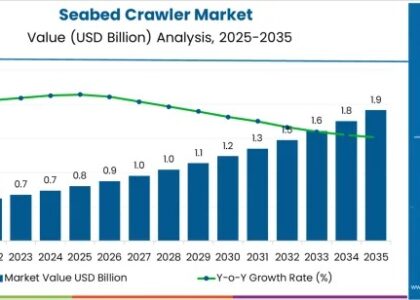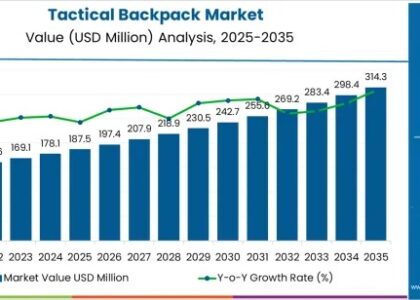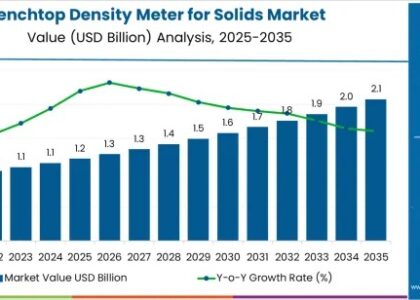In a world where climate change is no longer a distant threat but a present reality, the agricultural sector finds itself in a constant state of adaptation. Traditionally, the conversation around fertilizers has focused on boosting crop yields or increasing nutrient efficiency. However, a less commonly explored yet increasingly critical angle is how fertilizers can aid in climate resilience. Controlled and slow release fertilizers (CSRFs), often overshadowed by more familiar agrotech terms, are emerging as silent game-changers in building agricultural systems capable of withstanding environmental volatility.
Rethinking Fertilizers in the Face of Climate Uncertainty
Farmers worldwide are battling unpredictable weather patterns—be it prolonged droughts, unseasonal rainfall, or extreme temperature fluctuations. These climate shifts are not only threatening crop productivity but also accelerating nutrient losses from the soil, thereby reducing the effectiveness of conventional fertilizers. CSRFs address this challenge head-on. Unlike traditional fertilizers that release nutrients immediately upon application, CSRFs release them gradually, aligned with the plant’s growth needs and the soil’s absorption capacity.
𝐌𝐚𝐤𝐞 𝐈𝐧𝐟𝐨𝐫𝐦𝐞𝐝 𝐃𝐞𝐜𝐢𝐬𝐢𝐨𝐧𝐬 – 𝐀𝐜𝐜𝐞𝐬𝐬 𝐘𝐨𝐮𝐫 𝐒𝐚𝐦𝐩𝐥𝐞 𝐑𝐞𝐩𝐨𝐫𝐭 𝐈𝐧𝐬𝐭𝐚𝐧𝐭𝐥𝐲! https://www.futuremarketinsights.com/reports/sample/rep-gb-1559
This ability to control the nutrient release profile makes them particularly suited to climate-stressed farming environments. They minimize leaching during heavy rains and ensure nutrient availability during dry spells—an ideal strategy for ensuring plant stability when the weather is anything but stable.
Decoding Climate Resilience in Agriculture
While much of the dialogue on climate-resilient agriculture revolves around drought-resistant seed varieties or water-saving irrigation methods, fertilizers often remain an afterthought. Yet, they play a crucial role in soil health and crop robustness. The science behind CSRFs offers a fascinating insight into how chemistry and agronomy intersect to create fertilizers that adapt to their environment.
Modern smart fertilizer technologies incorporate biodegradable coatings or encapsulation mechanisms that respond to environmental triggers. For instance, polymer-coated urea slowly dissolves based on soil temperature and moisture levels, ensuring nutrient delivery is both efficient and environmentally sensitive. This mitigates nitrogen volatilization and reduces the risk of runoff, two major concerns as climate change increases the frequency of erratic rainfall.
Field Evidence: How Controlled Release is Changing Outcomes
In Andhra Pradesh, India—a region facing increasing climate variability—trials with polymer-coated fertilizers demonstrated a 25% reduction in nitrogen runoff and a 15% increase in rice yield compared to conventional urea. Similar trials in Eastern Kenya showed that using slow release fertilizers helped maize crops maintain steady growth even when rainfall decreased by 30% compared to previous years. These outcomes underscore the role of CSRFs not just in improving productivity but also in stabilizing it under unpredictable conditions.
Regional Momentum Driven by Climate Stress
The market for CSRFs is expanding globally, but not uniformly. Regions experiencing the most severe climate effects are leading in adoption. Southeast Asia, with its monsoon-driven farming calendar, is seeing significant uptake of controlled nutrient delivery systems to manage rainfall extremes. In Australia, persistent droughts have pushed farmers to use fertilizers that retain moisture and supply nutrients incrementally to reduce waste and enhance root absorption.
𝐓𝐨 𝐆𝐚𝐢𝐧 𝐌𝐨𝐫𝐞 𝐈𝐧𝐬𝐢𝐠𝐡𝐭𝐬 𝐚𝐛𝐨𝐮𝐭 𝐭𝐡𝐢𝐬 𝐑𝐞𝐬𝐞𝐚𝐫𝐜𝐡, 𝐕𝐢𝐬𝐢𝐭! https://www.futuremarketinsights.com/reports/controlled-and-slow-release-fertilizer-market
According to a report by the International Fertilizer Association, demand for eco-efficient fertilizers in sub-Saharan Africa is projected to grow at over 6% CAGR through 2030—much higher than the global average. This surge is being driven not just by agronomic benefits but by the pressing need for climate adaptation tools that maintain food supply stability.
Regulatory Forces and the Innovation Push
Governments and regulatory agencies are starting to recognize the pivotal role fertilizers play in sustainable farming. The European Union’s Green Deal, for instance, promotes the reduction of nutrient losses by 50% by 2030, indirectly encouraging the use of controlled and slow release formulations. Similarly, India’s Ministry of Agriculture has proposed new standards for biodegradable slow release fertilizers, aligning with its climate-resilient agriculture mission.
Innovation is following suit. Companies are investing heavily in developing bio-based and nano-enabled fertilizers that respond dynamically to soil pH and microbial activity. Start-ups in North America are experimenting with carbon-negative fertilizers that not only feed crops but also sequester carbon, doubling as a climate mitigation tool.
Balancing Costs with Long-Term Benefits
Despite their potential, the wider adoption of CSRFs is hampered by their higher upfront costs. Smallholder farmers in particular find it difficult to justify the expense without immediate return on investment. However, long-term benefits such as improved soil health, reduced fertilizer application frequency, and consistent crop output make them economically viable over multiple seasons.
To overcome financial barriers, various models are being piloted. In parts of East Africa, NGOs are introducing subscription-based fertilizer delivery systems where farmers receive micro-doses tailored to seasonal needs. In Latin America, agri-tech platforms are offering fertilizer-as-a-service models bundled with crop advisory solutions, making CSRFs accessible to those who need them most.
Fertilizer & Agrochemicals: https://www.futuremarketinsights.com/industry-analysis/fertilizer-and-agrochemicals
A Fertilizer Revolution Rooted in Resilience
The Controlled and Slow Release Fertilizers Market is evolving—not merely in terms of product innovation but in its fundamental purpose. As the effects of climate change intensify, fertilizers must do more than feed plants. They must become part of the solution—tools of resilience in a warming world.
What was once considered a niche solution for yield optimization is now emerging as a strategic asset in climate-smart farming. In this transformation lies the real story of the CSRF market—one not of flashy innovation, but of quiet, calculated adaptation. And that might just be the most important fertilizer story of our time.






